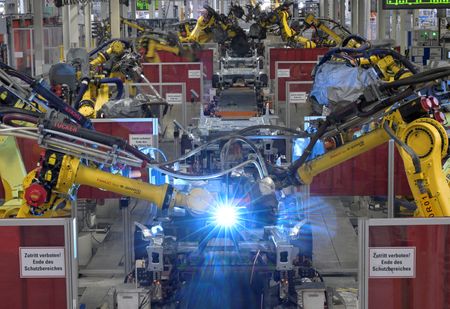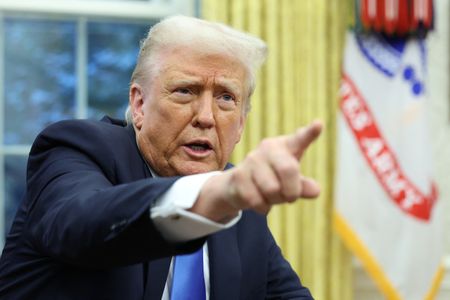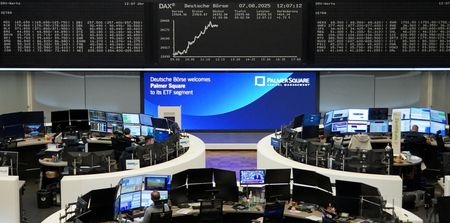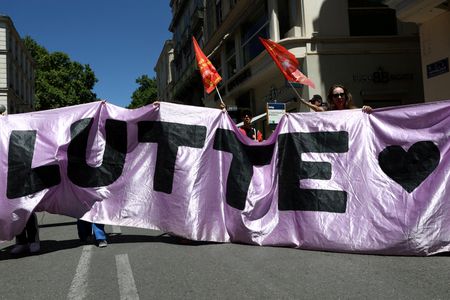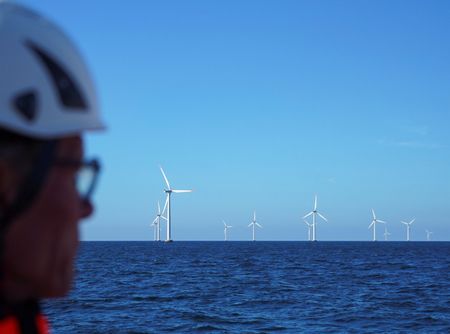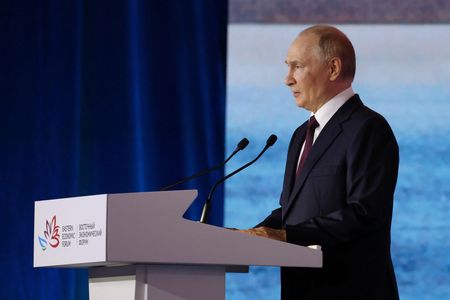By Andrea Shalal, David Lawder and Nandita Bose
WASHINGTON (Reuters) -U.S. President Donald Trump said he would impose reciprocal tariffs as soon as Wednesday evening on every country that charges duties on U.S. imports, in a move that ratchets up fears of a widening global trade war and threatens to accelerate U.S. inflation.
“I may do it later on or I may do it tomorrow morning, but we’ll be signing reciprocal tariffs,” Trump told reporters at the White House.
Trump’s latest round of market-rattling tariffs comes as Indian Prime Minister Narendra Modi is due to visit the White House on Thursday. The Trump administration has complained that India has high tariffs that lock out U.S. imports.
Republican U.S. House of Representatives Speaker Mike Johnson said that he believed Trump is considering exemptions that would include the automotive and pharmaceutical industries, among others, but said he was not certain.
Economists broadly see tariffs as an inflation risk, and data released on Wednesday showed consumer prices increased in January by the most in nearly 1-1/2 years.
The president has already stunned markets by announcing tariffs on all steel and aluminum imports beginning on March 12. That drew condemnation from Mexico, Canada and the European Union, while Japan and Australia said they were seeking exemptions from the duties.
The news sent industries reliant on steel and aluminum imports scrambling to offset an expected jump in costs.
The EU will prioritize negotiations over retaliatory countermeasures to avoid a damaging trade war, officials signaled earlier on Wednesday.
An EU government official said ministers considered reinstating countermeasures imposed in 2018 on products like bourbon and Harley-Davidson motorcycles in response to Trump’s tariffs on steel and aluminum.
EU trade chief Maros Sefcovic spoke on Wednesday with Hassett, Commerce Secretary-designate Howard Lutnick and U.S. trade representative nominee Jamieson Greer.
HIGHER PRICES
Last week, Trump imposed an additional 10% tariff on Chinese goods, effective February 4, with Chinese countermeasures taking effect this week.
He delayed a 25% tariff on goods from Mexico and Canada until March 4 to allow negotiations over steps to secure U.S. borders and halt the flow of the drug fentanyl.
Some U.S. workers have welcomed the metal tariffs, but manufacturing firms and other businesses have warned the hike would lead to higher prices.
“You can’t change your supply chain overnight, and with the number and pace of these changes, even if you tried to stay ahead of it, can you stay ahead of it?” said David Young, an executive with the Conference Board, a global business group.
Europe’s steelmakers are also worried that U.S. tariffs will lead to a flood of cheap steel into Europe.
Canadian Prime Minister Justin Trudeau, speaking to reporters in Brussels, said some Americans would lose their jobs and U.S. growth would suffer from Trump’s metals tariffs.
TRICKY TO IMPLEMENT
Trump trade adviser Peter Navarro downplayed the negative impact of the expected tariffs, telling CNBC that duties imposed during Trump’s first term did not send inflation soaring and that export-dependent producer economies often lowered their prices to prevent losing market share.
Trade experts say structuring the reciprocal tariffs that Trump wants would be difficult.
U.S. officials could opt for a more easily implemented flat 10% or 20% tariff rate, or a messier approach that would require separate tariff schedules matching U.S. tariffs to other countries’ rates, said William Reinsch, senior fellow at the Center for Strategic and International Studies.
Damon Pike, a trade specialist at accounting firm BDO International, noted that each of the 186 members of the World Customs Organization had different duty rates.
“It’s almost an artificial intelligence project,” he said.
(Reporting by Andrea Shalal, Nandita Bose, David Lawder in Washington; Additional reporting by David Gaffen, Susan Heavey, Doina Chiacu and Katherine Jackson; Writing by Andy Sullivan and Joseph Ax; Editing by Alex Richardson, Nick Zieminski and Diane Craft)

